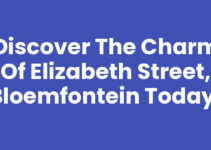Bloemfontein, the capital city of the Free State province in South Africa, is a vibrant city steeped in history and culture. Known for its educational institutions and historical significance, it’s essential to explore the demographics that shape the community of Bloemfontein. From population statistics to cultural diversity, this blog post will provide in-depth insights into the Bloemfontein demographics.
Bloemfontein Demographics: A Detailed Overview
Bloemfontein’s demographics reflect a rich tapestry of cultures and communities. As of the latest census, the estimated population of Bloemfontein is approximately 500,000 residents. Here’s a detailed breakdown of the various demographic aspects:
Population Composition
The population is primarily composed of individuals from various racial and ethnic groups. Approximately 68% of the population identifies as Black African, 22% as Coloured, 9% as White, and 1% as Indian/Asian. This diverse composition contributes significantly to the city’s cultural dynamics.
Age Distribution
The age distribution in Bloemfontein indicates a young population, with a significant proportion under the age of 35. The youth demographic (ages 0-14) constitutes about 30%, while those aged 15-34 make up around 25%. This youthful population is a driving force behind the economy and cultural vibrancy of the city.
Education Level
Bloemfontein is home to several reputable educational institutions, including the University of the Free State. Approximately 35% of the population maintains a tertiary education degree, guiding the city towards growth in skilled labor and innovation.
Economic Overview
The economic landscape in Bloemfontein is diverse, with major sectors including public administration, education, healthcare, and commerce employing a significant number of residents. The unemployment rate hovers around 25%, emphasizing the need for job creation and economic initiatives to harness the potential of the younger population.
Further Reading: Explore the Best Bookstores in Mimosa Mall, Bloemfontein
Implications of Bloemfontein’s Demographics
The demographics of Bloemfontein have far-reaching implications for city planning, education, and healthcare services. Here are some critical considerations:
Cultural Integration
With its diverse population, the city fosters a rich cultural milieu. Festivals, community events, and educational programs that promote inclusivity are vital. Understanding these demographics can help local government cater to cultural needs, enhancing community cohesion.
Challenges and Opportunities
One significant challenge facing Bloemfontein is the high unemployment rate among the youth. However, this presents opportunities for targeted training programs and entrepreneurship initiatives that can engage the young workforce. Establishing partnerships between educational institutions and local businesses can pave the way for innovative solutions.
Recommended Reading: Discovering the Source of the Modder River, Bloemfontein
Conclusion
Understanding Bloemfontein demographics is crucial for stakeholders looking to foster economic growth and cultural enrichment in the city. The rich diversity and youthful population ensure that Bloemfontein is not just a historical hub, but a city poised for future advancements. Continued investment in education and job creation will allow the community to thrive, making Bloemfontein a vital destination in South Africa.
You Might Also Like: Essential Moving Box Supplies Bloemfontein for Easy Relocation
Frequently Asked Questions
What is the population of Bloemfontein?
As of the latest estimates, Bloemfontein has a population of approximately 500,000 residents.
What are the major cultural groups in Bloemfontein?
The major cultural groups include Black Africans, Coloureds, Whites, and Indians/Asians, reflecting the city's diverse demographics.
How does education influence Bloemfontein's economy?
With around 35% of the population holding tertiary education degrees, education significantly contributes to the skilled workforce and drives local economic growth.



